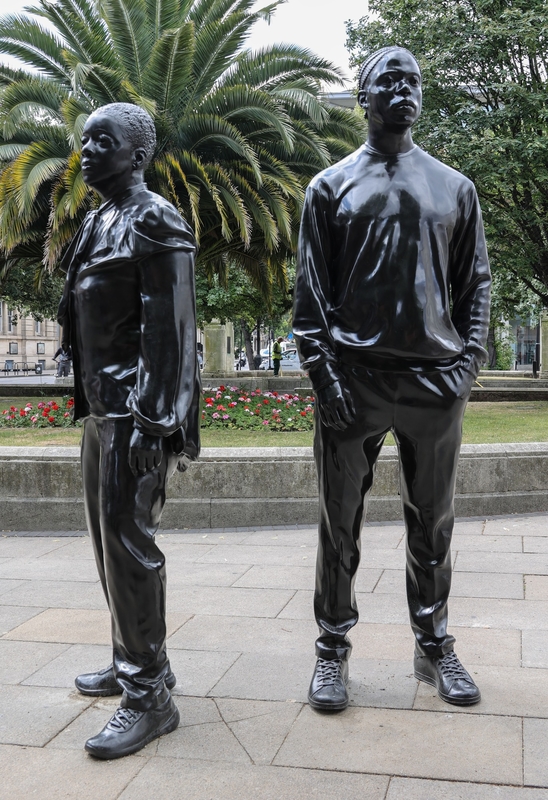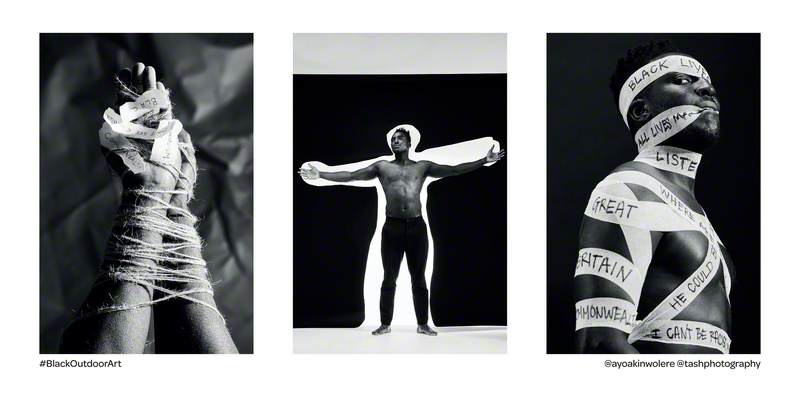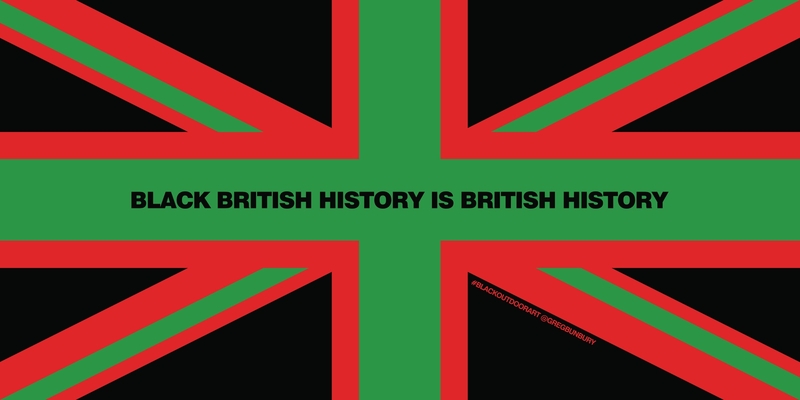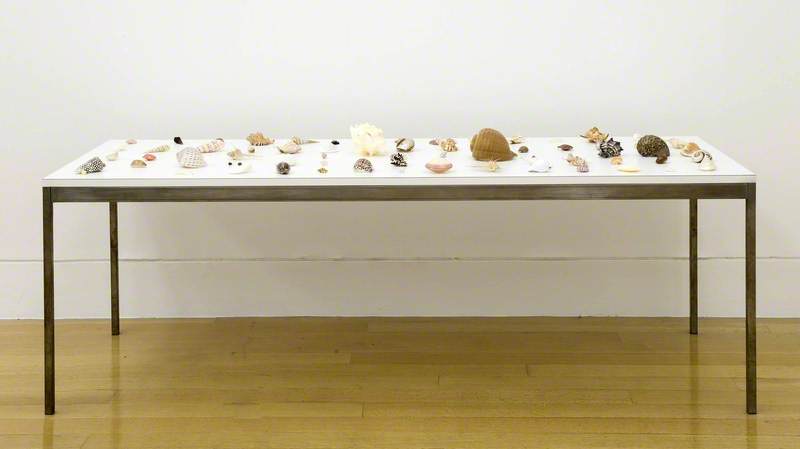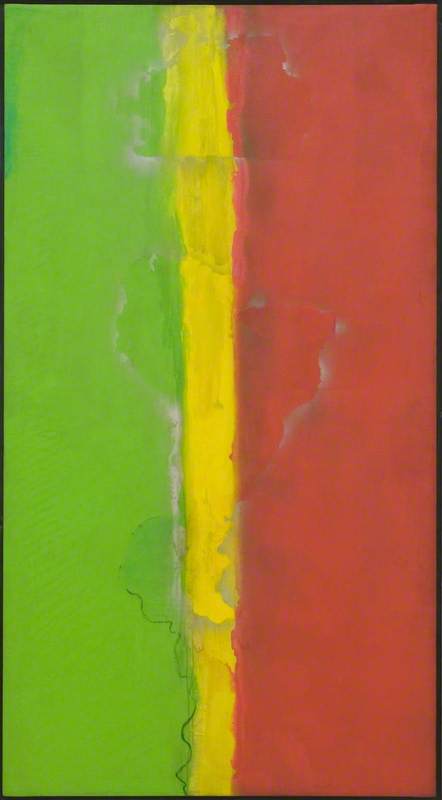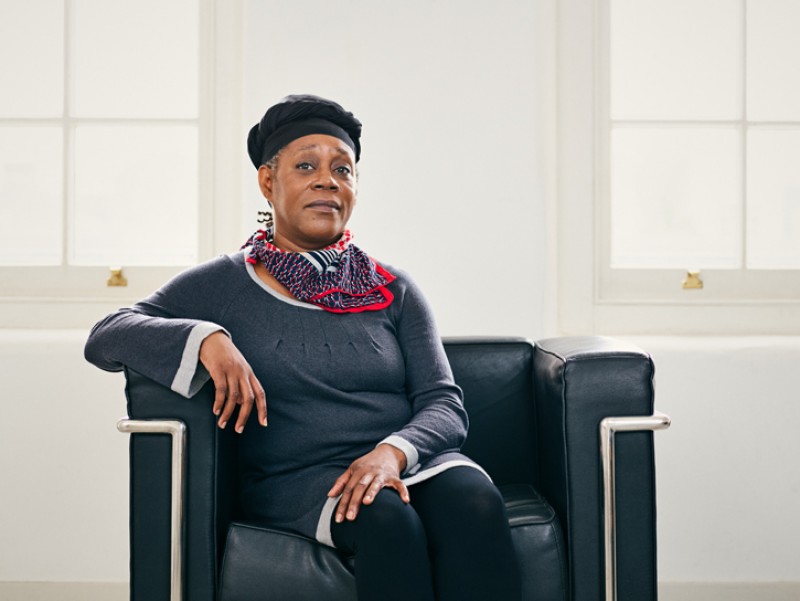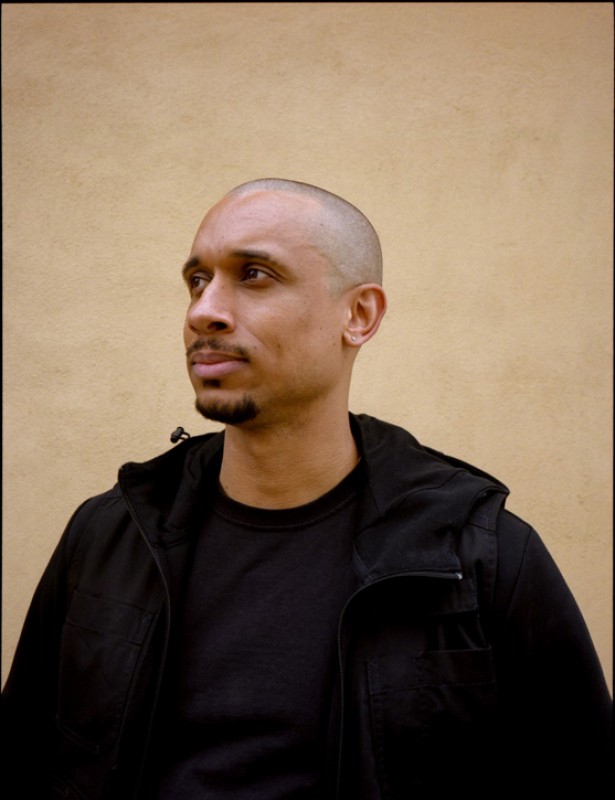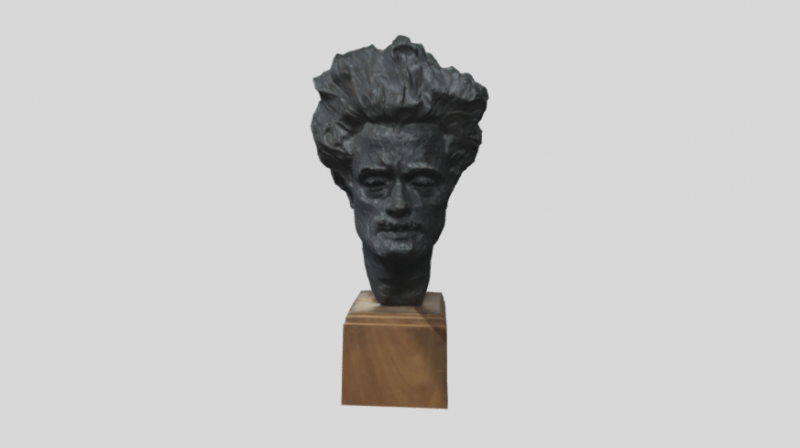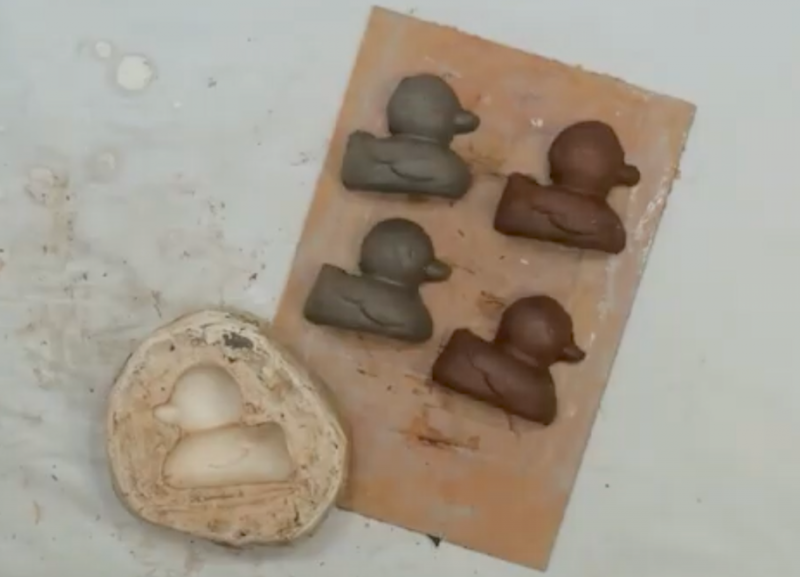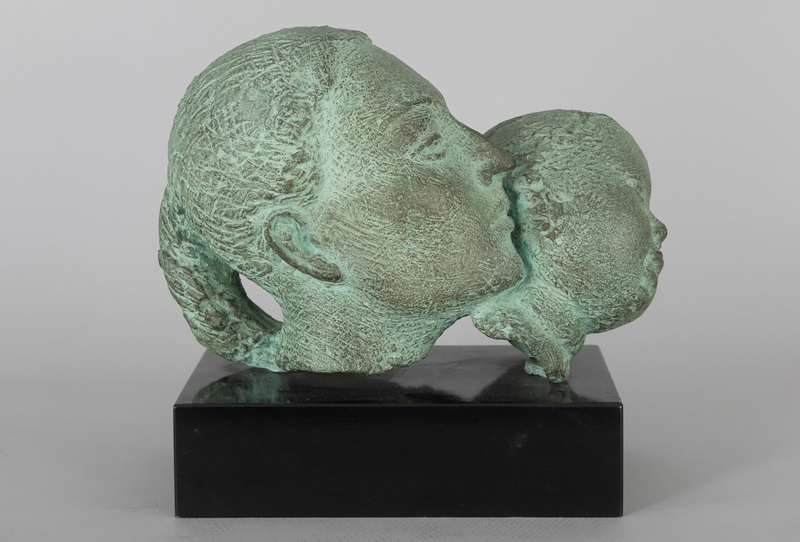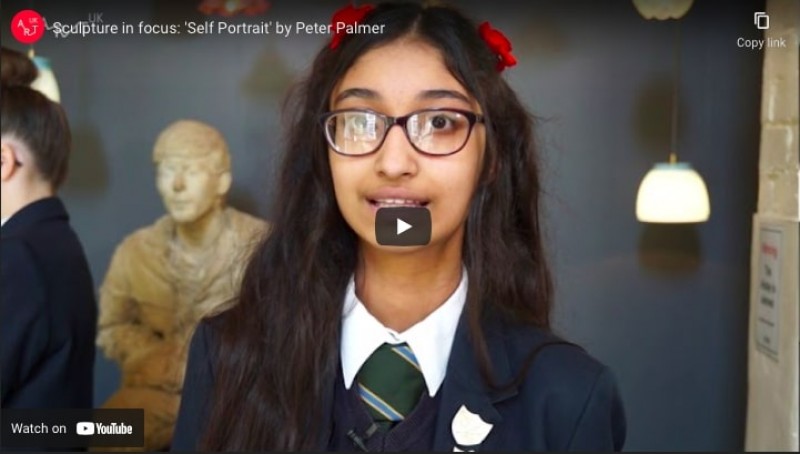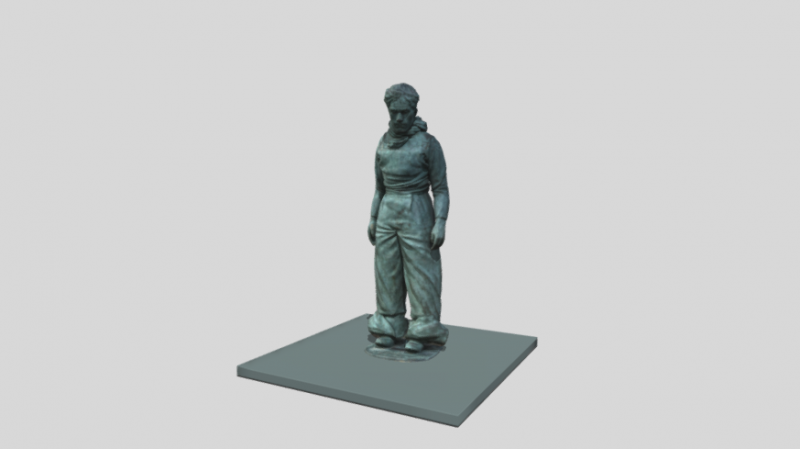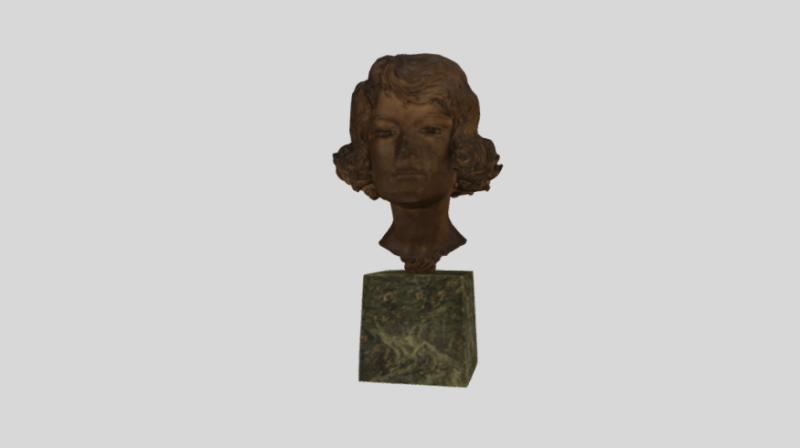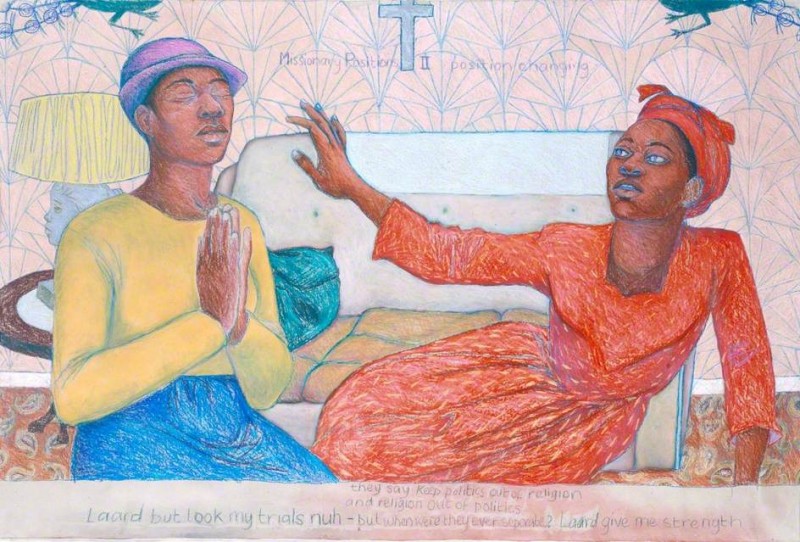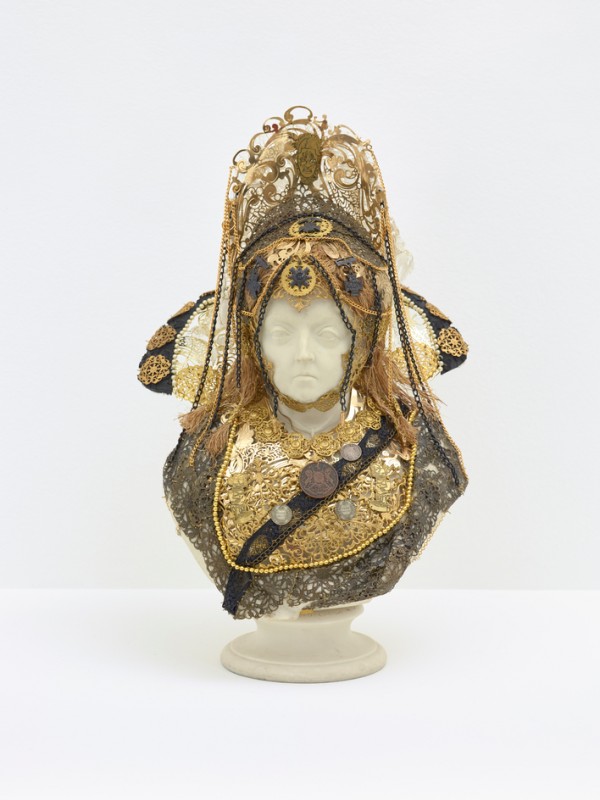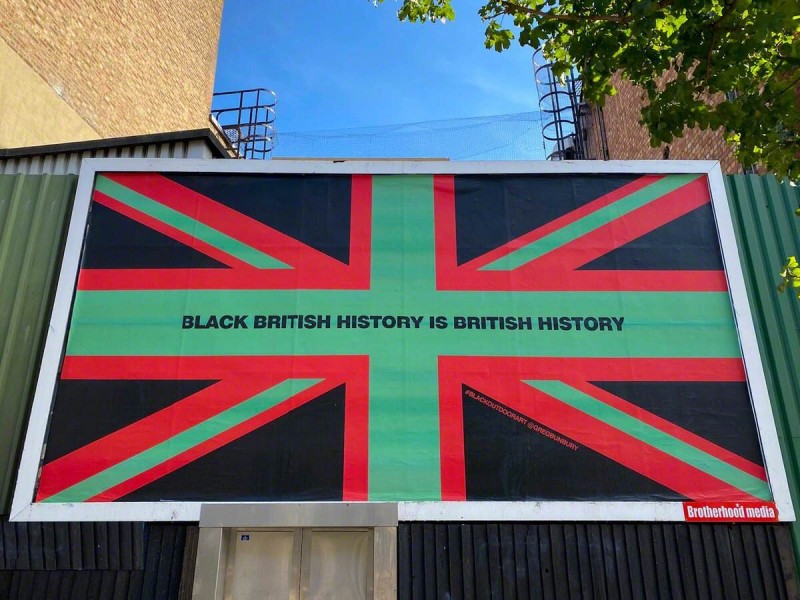Introduction and discussion suggestions
The Caribbean people who moved to the UK from the 1940s to the early 1970s contributed to the building of the UK's economy after the war and enriched British culture, but the Windrush scandal of 2018 exposed the institutional racism that they and their children faced and still face. What has been the reality of life in the UK for the Windrush Generation and their families, and how has this been addressed through art?
Below is a selection of artworks made by artists whose parents or grandparents came to Britain from the Caribbean. The works address themes around racism, equality, identity and empowerment. Use the artworks as a starting point for discussion or reflection and to develop creative projects that explore themes of activism and identity.
Questions for discussion or reflection
Use these questions to analyse, discuss or reflect on the artworks below.
- What are your first impressions of the artwork? What does it consist of? What can you see?
- Do you think the artwork has a message or purpose – or is it just something to look at and enjoy?
- What techniques has the artist used to engage viewers and put across their message?
- Is the location of the artwork important?
- Do you think it is a powerful artwork? What does it make you think and feel?
Donald Rodney: The Land of Milk and Honey (1997)
Artist Donald Rodney (1961–1998) made this sculpture as a tribute to his father who arrived in England from Jamaica in the 1960s. It addresses the disappointments and hardships that his father and others like him faced when they moved to the UK. The work is composed of a glass vitrine the sides of which are filled with milk and copper coins. These materials have reacted with each other and the appearance of the artwork has changed over time (and is still changing) – which was Rodney's intention. Through the glass, a rich mix of colours and textures can be seen.
The artwork's title The Land of Milk and Honey references the Biblical description of the land promised to the Israelites. For people from the Caribbean travelling to the UK in the mid-twentieth century, this is how Britain was imagined – as a place of wealth and opportunity. The money also represents the British economy and the benefits that immigrants have brought to the country.
The decay of the milk and coins symbolises the souring of the dreams and the reality of life in Britain for many of the Windrush Generation and their families.
The decay of materials also had a personal symbolism for Donald Rodney, who suffered from sickle cell disease. Rodney often included imagery relating to fragility and disease in his work, using this to reflect on and symbolise what he saw as the disease of modern British society and its treatment of the black community.
Donald Rodney was a leading figure in the BLK Art Group. In his work, he used images from the mass media, popular culture and art to explore issues of identity and racism.
Black Outdoor Art
Black Outdoor Art is a community art project and social initiative that was formed in the wake of the Black Lives Matter movement and uses outdoor advertising as a platform for Black British creativity.
It commissions produces and displays artworks created by Black British artists, designers, and illustrators that reflect the lived experience of Black people in the UK and inspire discussion, activism and change.
Greg Bunbury, who initiated the project, sees Black Outdoor Art as 'the marketing of antiracism'.
'A poster cannot produce structural change in itself, but it can add to a climate. It can contribute to a version of society as we wish it to be.'
- Discover the inspirations and motivations behind some of the artworks in this Curation
- Explore more artworks by Black Outdoor Art
Sonia Boyce: From Tarzan to Rambo: English Born ‘Native’ Considers her Relationship to the Constructed/Self Image and her Roots in Reconstruction (1987)
Sonia Boyce was born in London in 1962. Her father came to the UK in the 1950s from Barbados where he met her mother, who had arrived from Guyana to work in the NHS.
Boyce is the 'English Born Native' in her mixed media artwork From Tarzan to Rambo..., a work in which she explores her identity and the representation of Black people.
She considers her own self-image (the photo-booth style photos are self-portraits) alongside the stereotyped images of Black people as presented in the predominantly white media. In the self-portrait photos, she poses as if in a voodoo trance – something that is often parodied in Hollywood films. She is surrounded by images of African fabric, a cartoon drawing of 'natives' in a jungle, and repeated stock racist cartoon images of a Black child’s face.
Thomas J. Price: Warm Shores (2022)
We are used to seeing statues in public spaces. Most show powerful white men.
Thomas J. Price's sculptures show contemporary Black people. They look ordinary – they are on their phones, standing or walking, and are not placed on pedestals but stand at ground level.
In these sculptures, Price explores issues of power and representation challenging our current understanding of monuments and who is represented and celebrated:
'Who does society value? Who gets to be seen? Who gets to be represented?'
Thomas J. Price's grandmother moved to the UK from Jamaica to work as a nurse in the NHS. Warm Shores (2022) is a sculpture of a man and a woman whose likenesses are formed from an amalgamation of over 30 men and women connected to the Windrush community and their descendants in Hackney. They are dressed in casual clothes that Price hopes will transcend fashion so that the figures appear timeless. The hairstyles they wear are common to people across the Black diaspora – the woman's hair is cropped and curly in texture while the man's is braided into corn rows. Price wanted local people to be able to see themselves in the sculpture so that they could take ownership of it and be guardians of it.
Activity ideas
Inspired by the artists in this resource, plan and create an artwork that puts across a message about something important to you. If you are using this resource in a classroom setting, students could work individually or in groups.
This message could relate to a national or global issue such as equality or climate change or it could relate to an issue that is local to your community (e.g. pollution from a busy road or the closure of a local facility). Or the artwork could be used to reflect a more personal message about identity.
Here are some ideas ...
Design an artwork for a public place with a powerful message
This could be a poster or a sculpture – or it could be art that can be worn such as an image or text on a t-shirt or tote bag.
Look again at the posters made by Black Outdoor Art – how could you use typography and/or an image to make a powerful impact on the street? You could also explore the work of artists the Guerilla Girls, Jenny Holzer and Glenn Ligon who also make posters, flyers and placards that put across a powerful message.
Thomas J. Price's sculptures make us question what public sculpture is – or could be. Who or what would you put in a park, on the street or in a public square to make people think about your message?
Look at artworks on Art UK for inspiration:
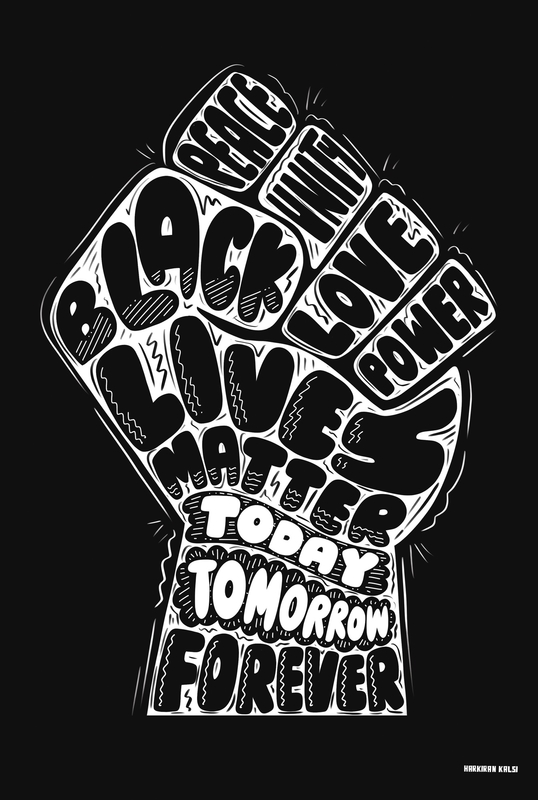

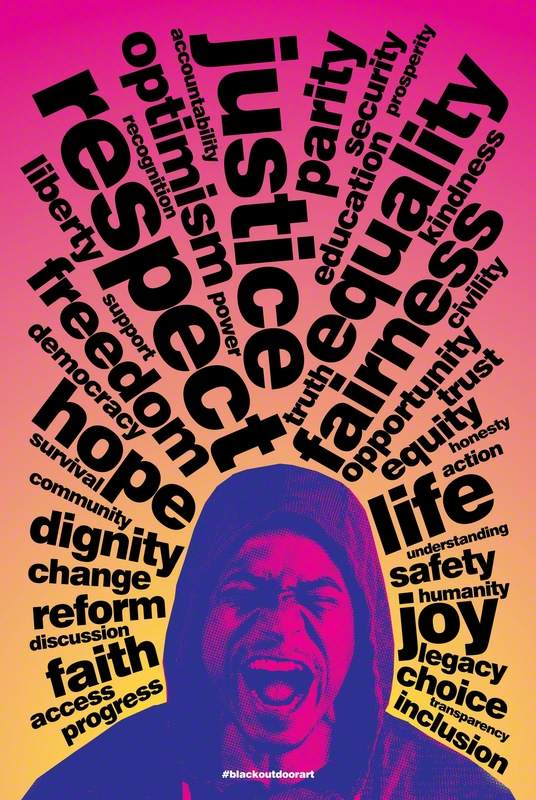


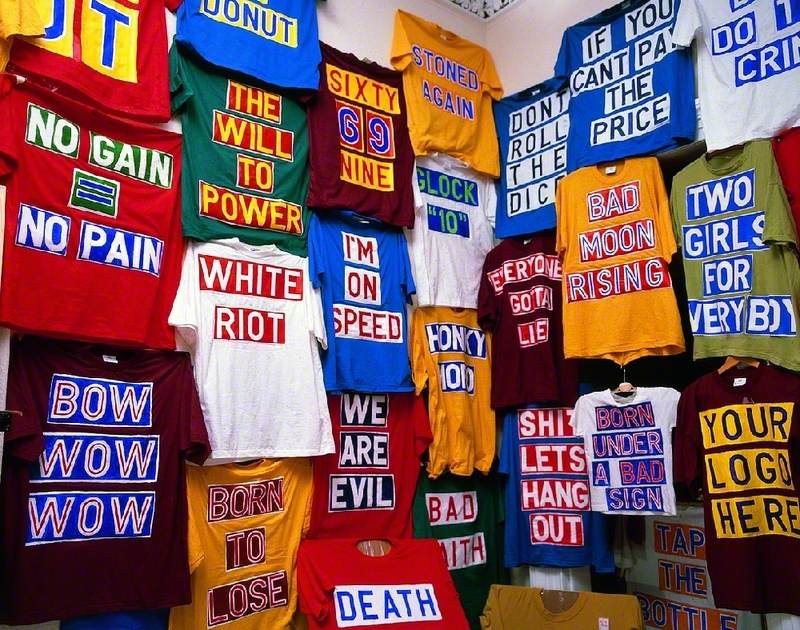


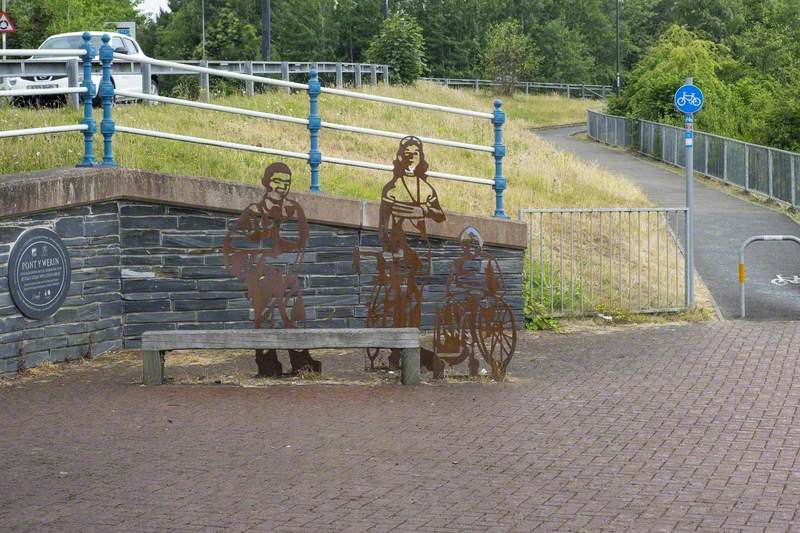
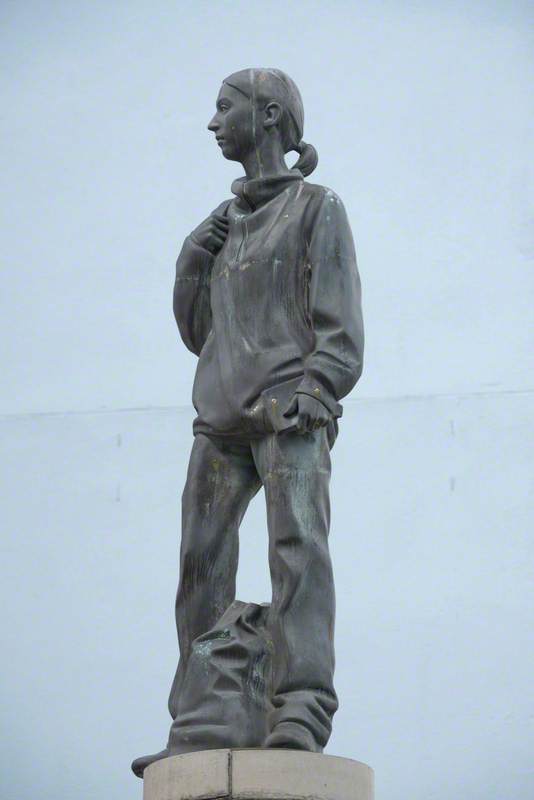

Create a mixed-media artwork that explores or expresses your identity
Use photographs, text and images as Sonia Boyce has done in From Tarzan to Rambo…
You could include photographs that express who you are. They don't have to be photographs of you but could relate to things that you are interested in or feel passionate about.
The artwork could include text. These could be single words or diary-like sentences of thoughts.
You could combine collage and paint and other media such as stitching to create a banner-style artwork or add images and text to an object to create a mixed-media sculpture.
- Have a look at Margaret Harrison's banner Homeworkers 1977 on Tate's website. She uses texts, photographs, newspaper clippings and images to put across her message about the unfair pay that many women who work at home receive.
- You could also explore Tracey Emin's banners.
- Artist Ingrid Pollard often combines photographs, text and spoken words to create her mixed media artworks.

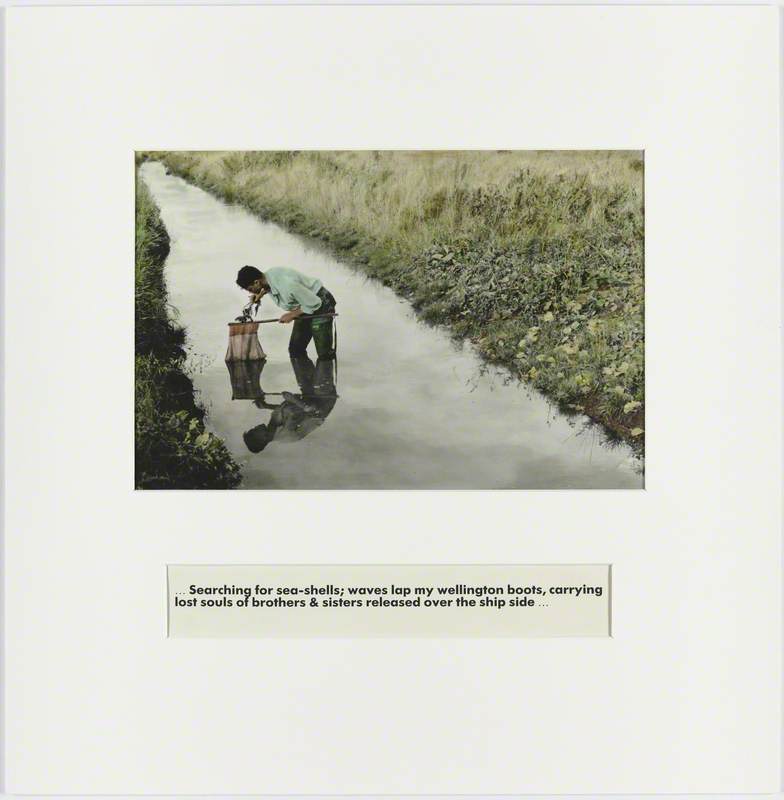
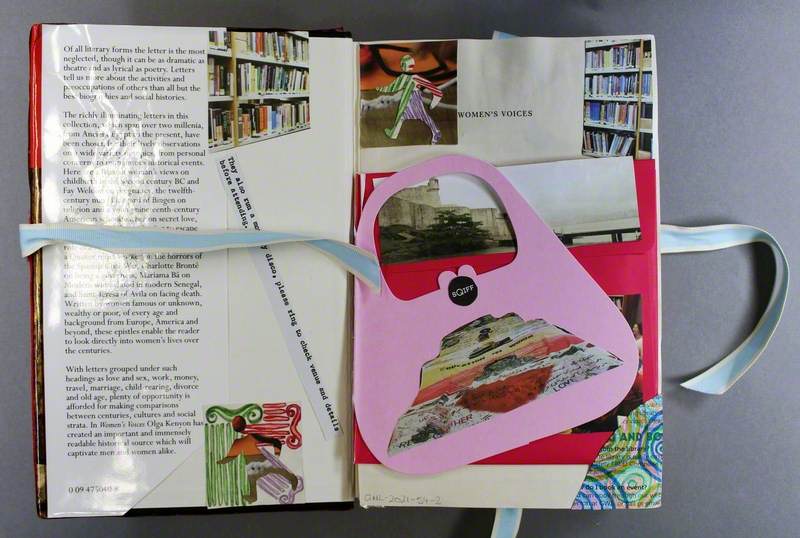

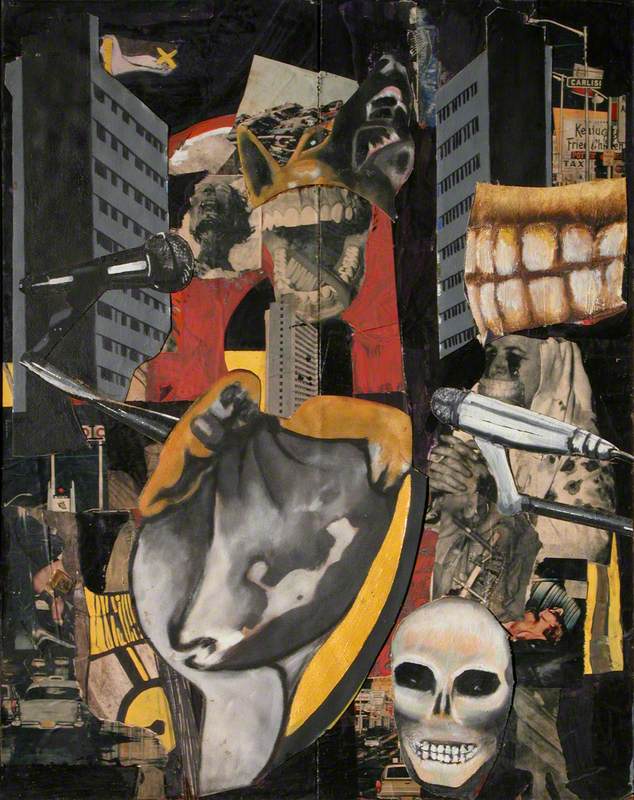
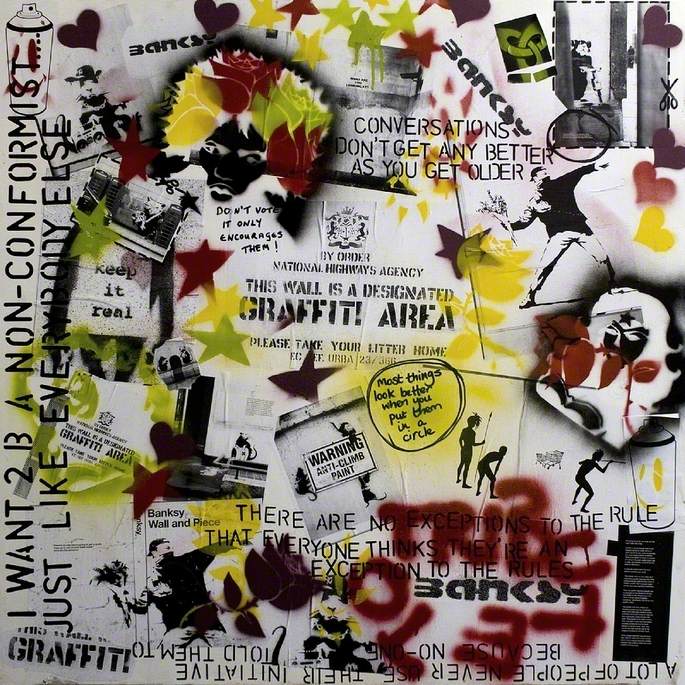


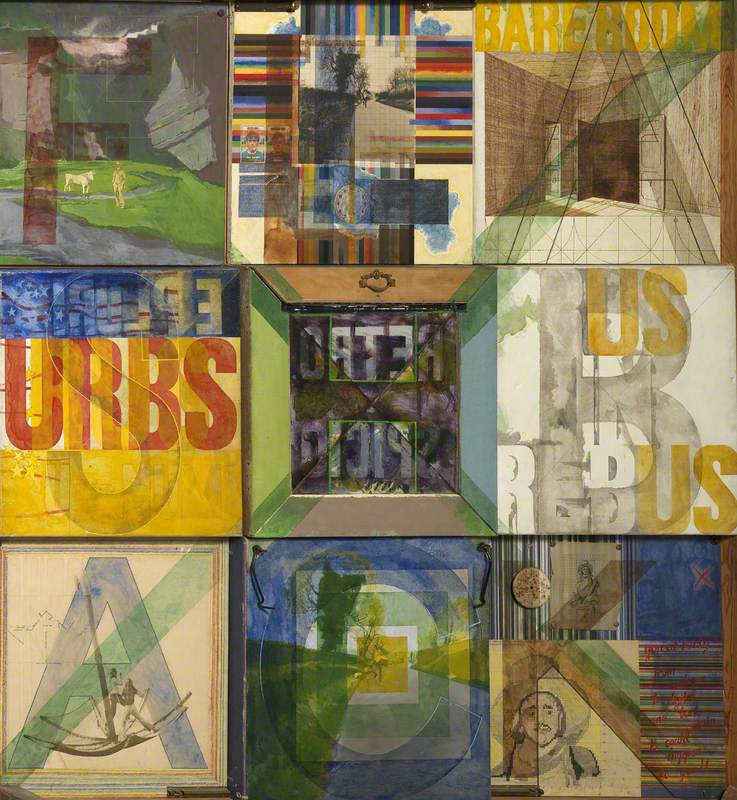


Put across your message in a conceptual or abstract artwork
Taking inspiration from Donald Rodney's Land of Milk and Honey, create an abstract or conceptual artwork that uses symbolic materials, colours and mark-making to put across your message.
Artist Sheela Gowda uses materials associated with everyday life in India such as incense, spices and tarpaulin (used to construct make-shift houses in the poor areas of the cities) to explore the history, culture and politics of India. American artist Mark Bradford also uses everyday materials from his local community. Los Mosccos 2004 at first looks like an abstract painting. It is in fact made from scraps of paper from posters and flyers found in his neighbourhood in LA. The layered abstract artworks symbolise the fabric and changing nature of the city.
Anya Gallaccio and Damien Hirst comment on the fragility of life, loss and mortality by using natural objects (that fade and die) in their work.
Meaning can also be conveyed in abstract artworks through mark-making and colours. Julie Mehretu uses a dense mesh-like layering of marks and lines in her drawings and paintings. These often suggest the movement of people and migration. In Mogamma 2012 the marks symbolise political movements and forces. They are drawn over a series of architectural plans and images of locations where public protests against corrupt regimes or damaging government policies have taken place. The painting can be seen as a tribute to communal resistance.
Frank Bowling sees colours as essential in putting across the meaning or message of his expressive abstract paintings. For his painting Who's afraid of Barney Newman 1968, he used the colours of the Guyana flag. Bowling was born in Guyana and sees the colours as representing an important part of his identity.
What colours would you use to represent who you are? (The colours could relate to your interests, personality, background or gender.)
